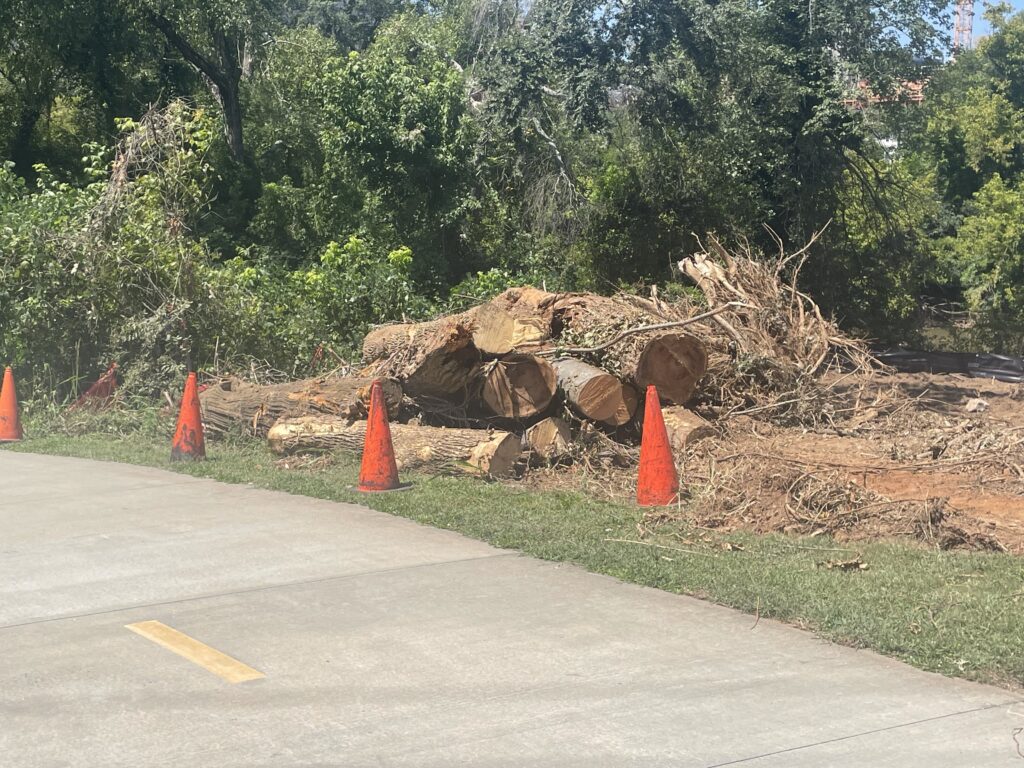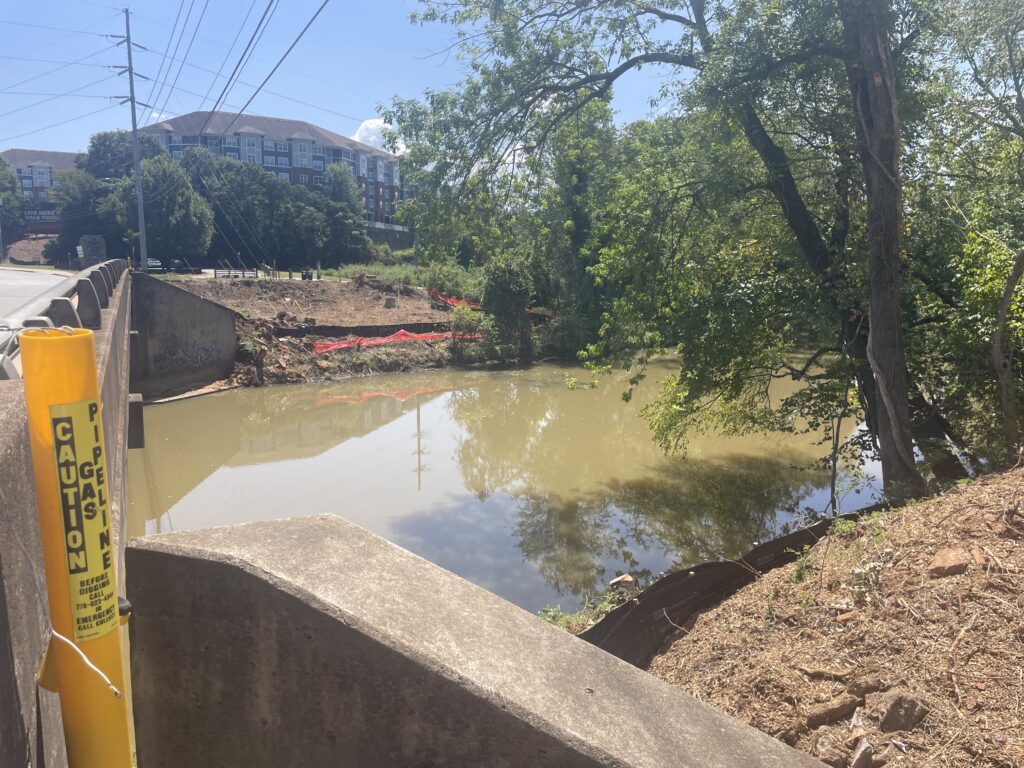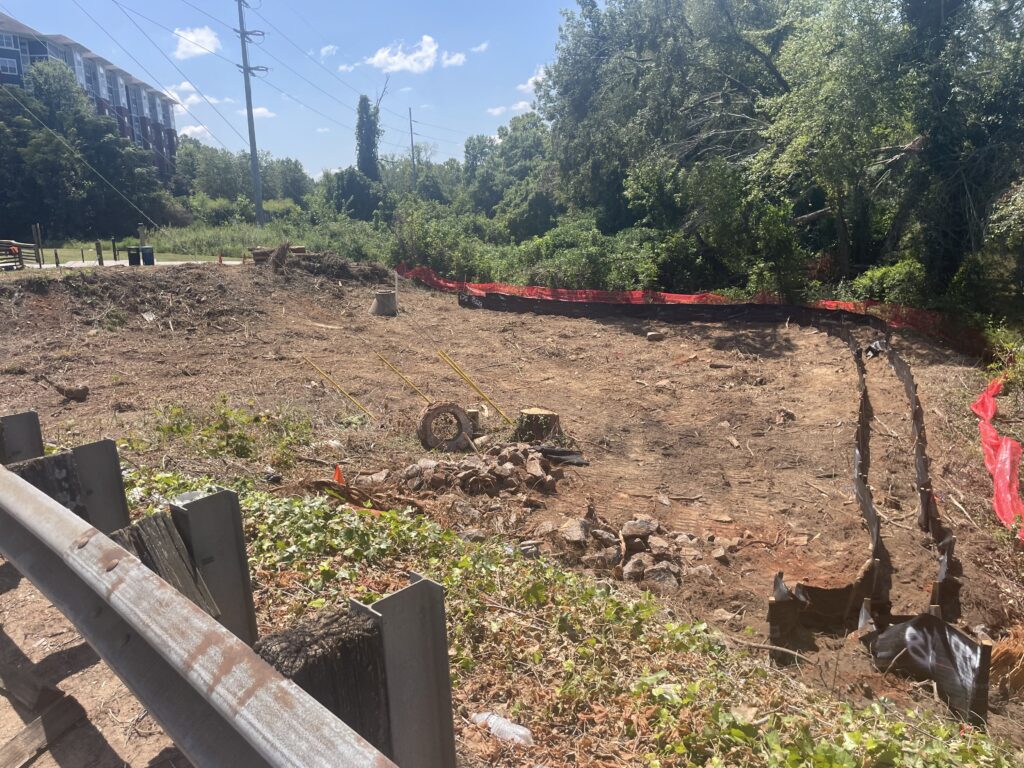
A few months ago, the views walking over the bridge on Oconee Street were filled with greenery surrounding the river. Lush tree branches dangled over the water. Leaves and other plants peeked out through the railing, impeding the walking space for pedestrians.
Now, the same spot is barren.
Tree stumps and debris litter the large patch of dirt left alongside the river. This new change in scenery is due to a project by the Georgia Department of Transportation (GDOT) and Georgia Power.
The GDOT project set to last almost four years will widen the roadway over the bridge and require Georgia Power to move electrical lines away from the street. In addition, the project will connect the North Oconee River Trail along the river, underneath the bridge. The tree removal to clear the land to accomplish these projects can have environmental impacts, such as contributing to the urban heat island effect.

Patricia Yager, a professor at the University of Georgia and director of the Georgia Climate Project, said trees are important in combating the rising heat in urban communities because of their abilities to keep neighborhoods cool and store carbon.
“In terms of urban heat, absolutely the correlation between tree cover and urban heat is opposite,” Yager said. “The more we cut down, the worse it’s going to be. We know this. This is not rocket science.”
Kaylee Tam, a fourth-year environmental engineering major at the University of Georgia, said she can feel the direct impacts of the urban heat island effect on campus.
You can tell a pretty big difference between standing on main library, where they have that big green space with all those trees, versus standing in Tate Plaza,” Tam said.
Some of the other impacts of maintaining urban trees, in addition limiting rising temperatures, include reduced greenhouse gases and reduced stormwater runoff. Removing urban trees can also increase noise, light and air pollution.
Mateo Fennell, the Athens-Clarke County community forester, said there is also a large economic impact in Athens when it comes to keeping trees. He said trees can help lower personal costs, specifically allowing residents to run their air conditioning less, and can add property value. He added the money saved or gained by trees can then be filtered back into the community through local spending downtown.
“Even those who aren’t looking at trees in a green mindset can still see, I guess, the other green mindset in tax revenue,” Fennell said.
But, the project on Oconee Street isn’t the only GDOT project in Athens with tree removal. A new loop ramp connecting Atlanta Highway and SR Loop 10 has required additional tree loss as well.
However, Fennell said both GDOT and Georgia Power projects are exempt from the Athens tree ordinance.
“You can’t really argue with Georgia Power,” Fennell said. “I learned that pretty quickly.”

In 2018, Georgia ranked among the top five states for tree loss according to a study by the United States Department of Agriculture Forest Service. However, Athens has been combating tree loss since 2005, when the government adopted a tree ordinance to maintain at least 45% tree cover in the city.
“I think it really started so early because we’ve been a really forward thinking community with respect to trees,” Fennell said.
An ACC study from 2021 found that Athens has 58.2% canopy cover and approximately 176 trees per acre. In comparison, Atlanta has only 36.7% canopy cover and 112 trees per acre. Fennell said the same study found that Athens has the largest canopy in America for cities with a population over 100,000.
But, Fennell warned that these numbers won’t last forever.
“We want 45% canopy,” Fennell said. “We’re actually higher than that, but at the rate that we’re going, we will eventually, we’re on a slow decrease, so we will go below that.”
With the 20-year anniversary of the tree ordinance approaching, Fennell said he is hoping to update the tree ordinance. Specifically, he said he would like to partner it with the stormwater management ordinance to implement a new policy for planting trees in parking lots.
“We’ve always been known as a very canopy-heavy place,” Fennell said. “And we’re trying to keep it that way.”
Cadie Carlson is a senior majoring in journalism at the University of Georgia.








Show Comments (0)